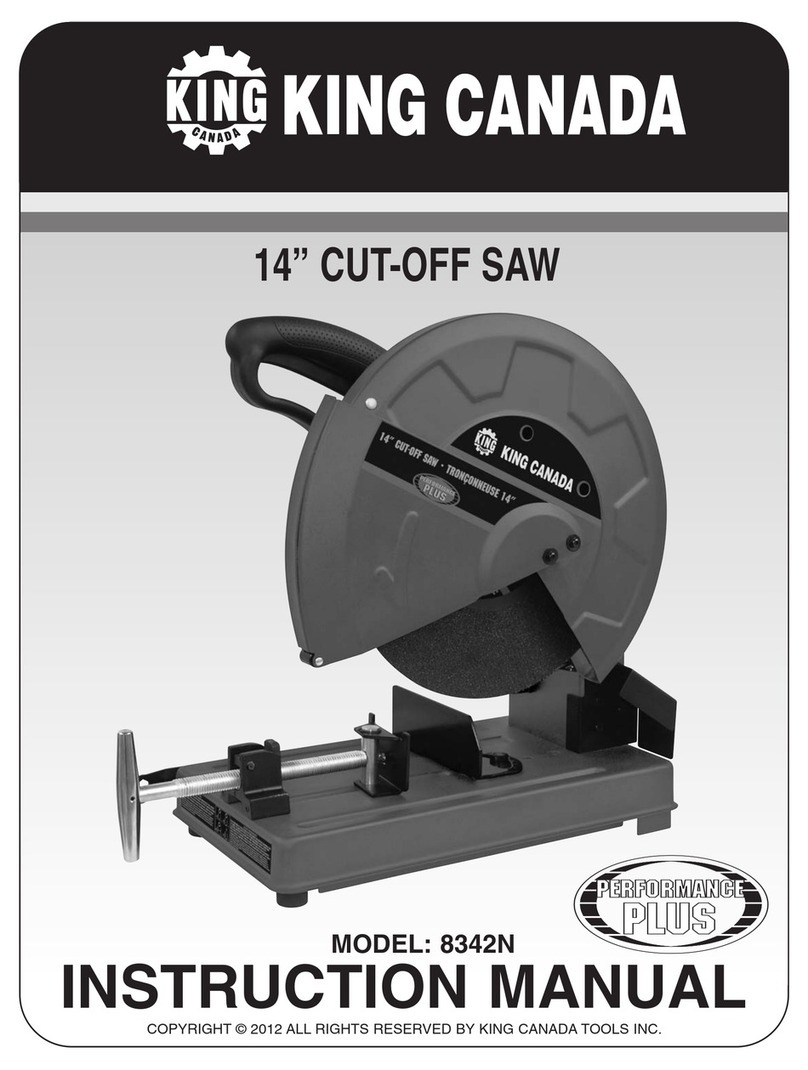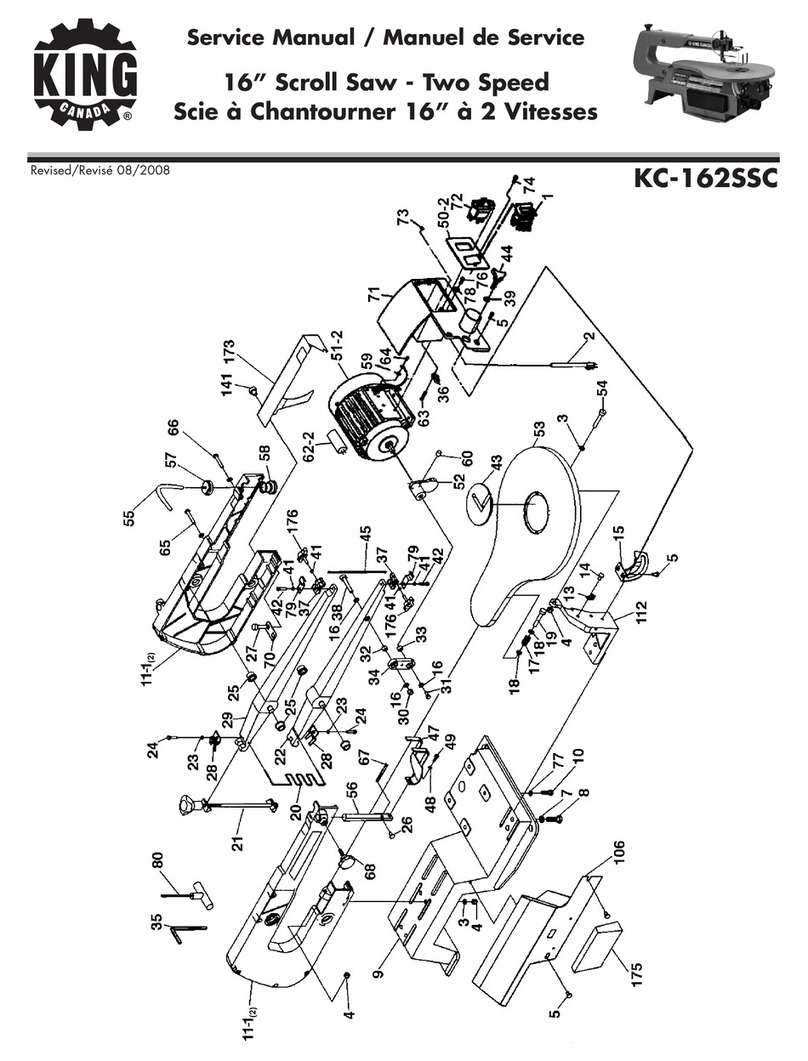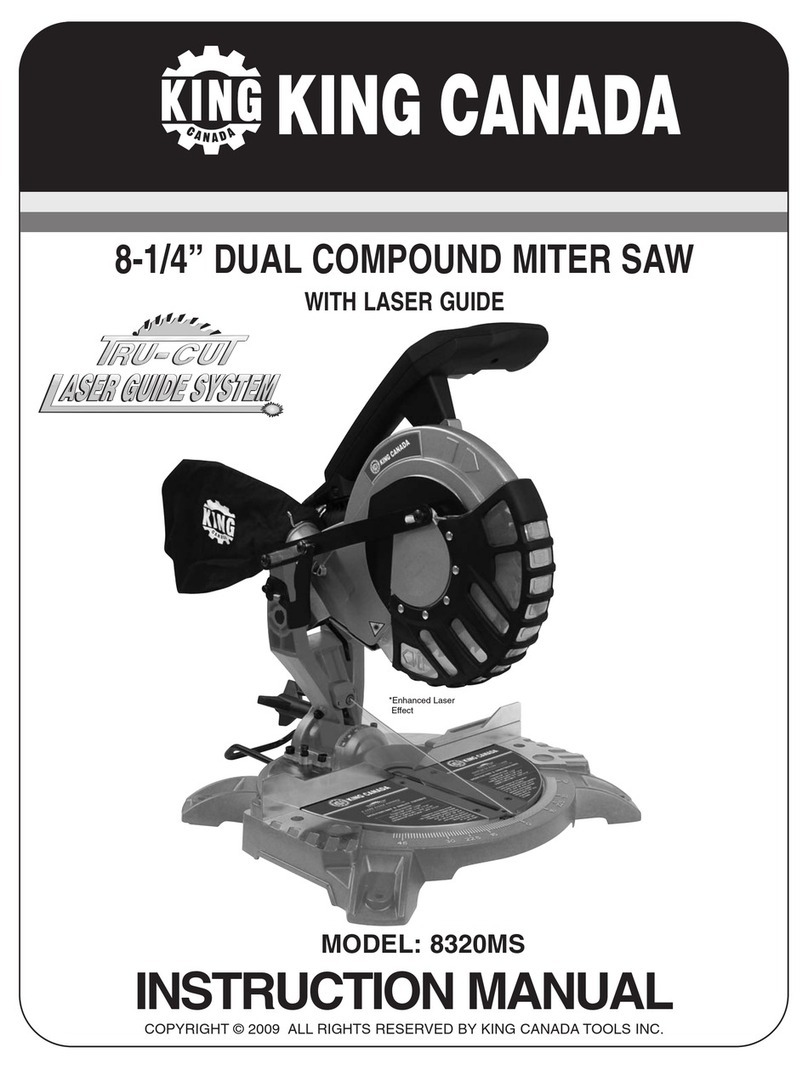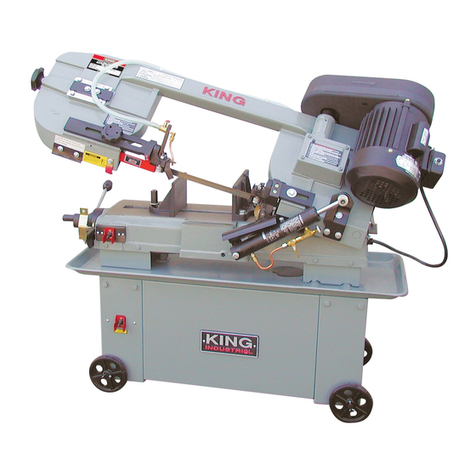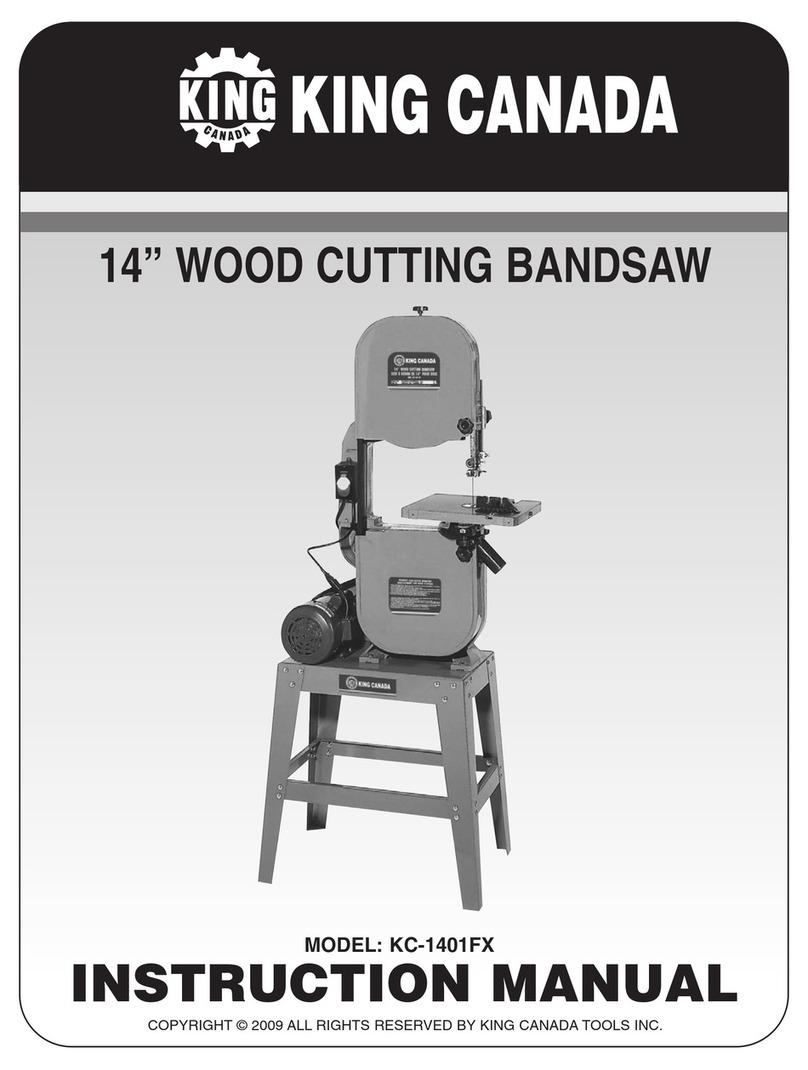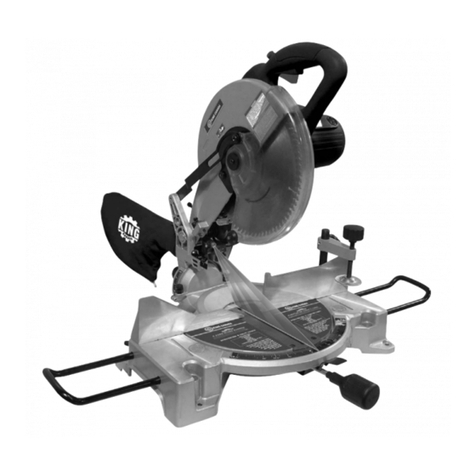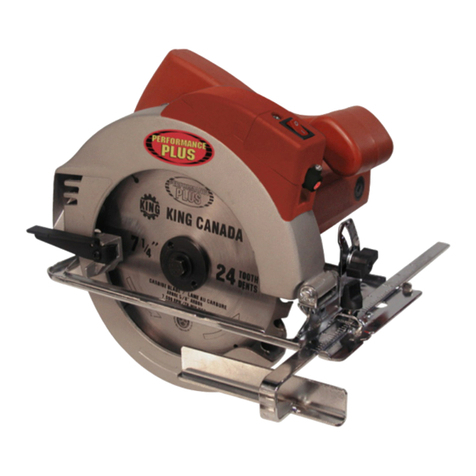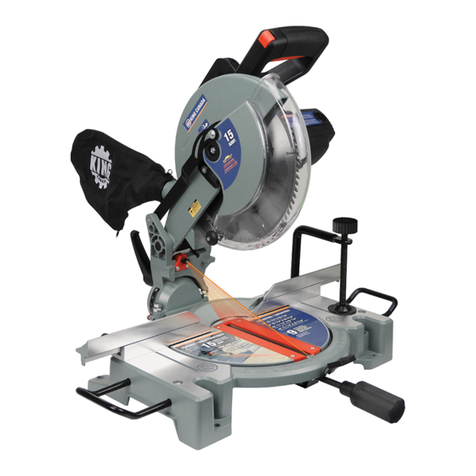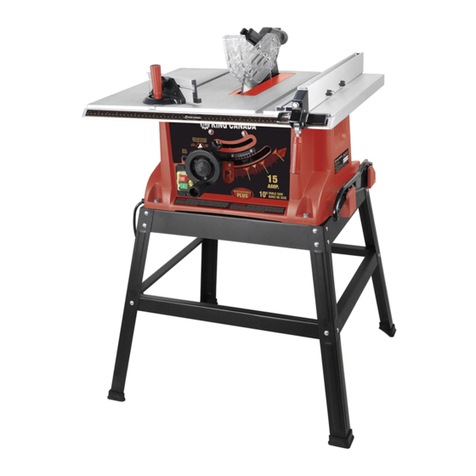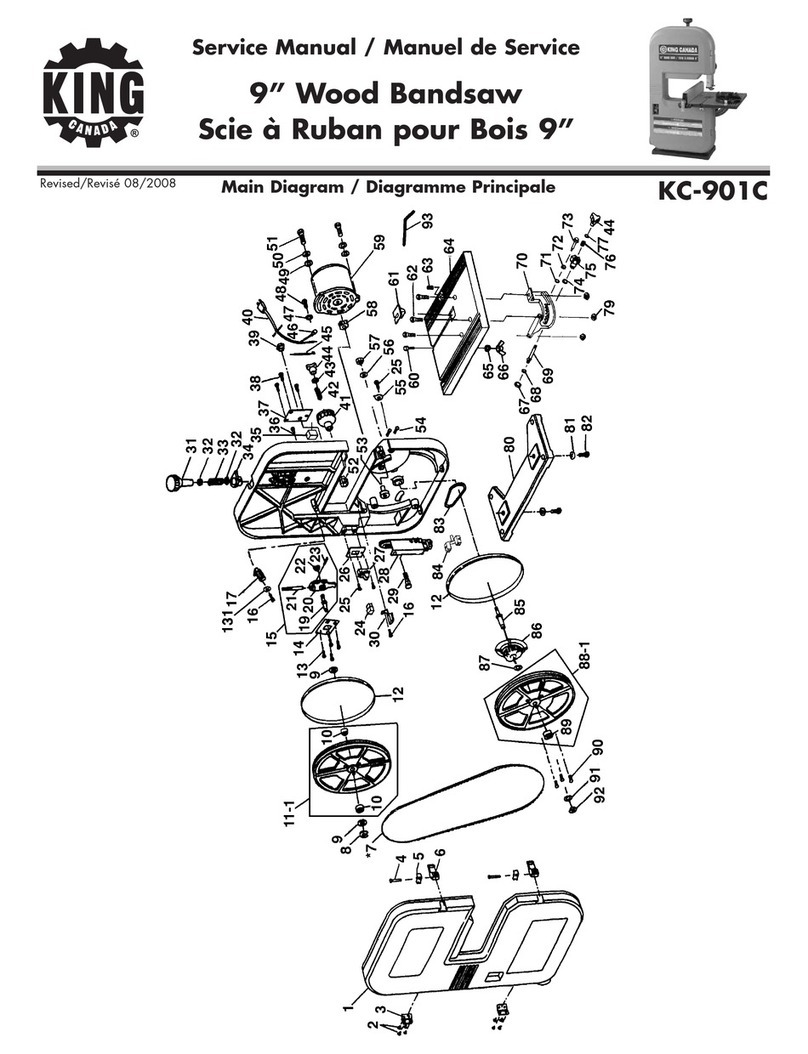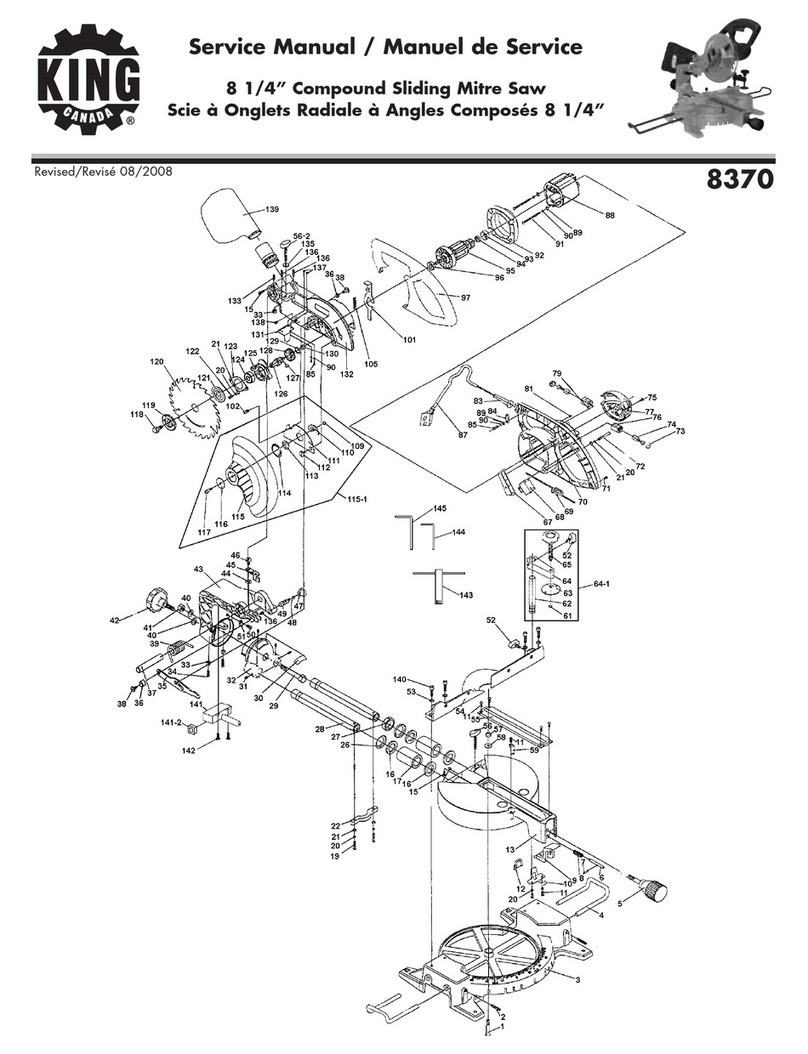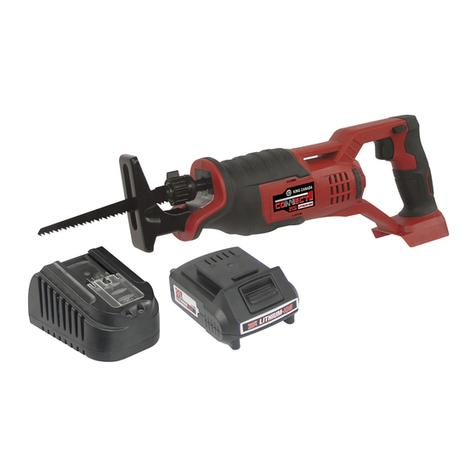GENERAL SAFETY INSTRUCTIONS
VOLTAGE WARNING:Before connecting the tool to a power source (receptacle, outlet,
etc.) be sure the voltage supplied is the same as that specified on the nameplate of the
tool. A power source with voltage greater than that for the specified tool can result in
SERIOUS INJURY to the user - as well as damage to the tool. If in doubt DO NOT
PLUG IN THE TOOL. Using a power source with voltage less than the nameplate is
harmful to the motor.
1. KNOW YOUR TOOL
Read and understand the owners manual and labels affixed to the tool. Learn its
application and limitations as well as its specific potential hazards.
2. REMOVE ADJUSTING KEYS AND WRENCHES.
Form habit of checking to see that keys and adjusting wrenches are removed from tool
before turning it on.
3. AVOID DANGEROUS ENVIRONMENT.
Don’t use power tools in damp or wet locations or expose them to rain. Keep work area
well lit and provide adequate surrounding work space.
4. KEEP CHILDREN AWAY.
All visitors should be kept a safe distance from work area. Use padlocks, master
switches or remove starter keys.
5. WEAR PROPER APPAREL.
Do not wear loose clothing, gloves, neckties or jewelry (rings, watch) because they could
get caught in moving parts. Non-slip footwear is recommended. Wear protective hair
covering to contain long hair.Roll up long sleeves above the elbows.
6. ALWAYS WEAR SAFETY GLASSES.
Always wear safety glasses (ANSI Z87.1). Everyday eyeglasses only have impact
resistant lenses, they are NOT safety glasses. Also use a face or dust mask if cutting
operation is dusty.
7. DISCONNECT TOOLS.
Before servicing, when changing accessories or attachments.
8. CHECK DAMAGED PARTS.
Before further use of the tool, a guard or other parts that are damaged should be
carefully checked to ensure that they will operate properly and perform their intended
function. Check for alignment of moving parts, breakage of parts, mounting, and any
other conditions that may affect its operation. A guard or other parts that are damaged
should be properly repaired or replaced.
9. NEVER LEAVE MACHINE RUNNING UNATTENDED.
Turn power ‘’OFF’’. Don’t leave any tool running until it comes to a complete stop.
POWER SUPPLY
WARNING: YOUR RECIPROCATING SAW MUST
BE CONNECTED TO A 110V, 15-AMP BRANCH
CIRCUI OR CIRCUIT BREAKER. FAILURE TO
CONNECT IN THIS WAY CAN RESULT IN INJURY
FROM SHOCK OR FIRE.
110V OPERATION
As received from the factory, your tool is ready to run
for 110V operation. This tool is intended for use on a circuit that has a polarized outlet
and a plug which looks like the one illustrated in Fig.1.
EXTENSION CORDS
The use of any extension cord will cause some loss of power. Use the following table to
determine the minimum wire size (A.W.G-American Wire Gauge) extension cord.
For circuits that are further away from the electrical circuit box, the wire size must be
increased proportionately in
order to deliver ample
voltage to the motor. Refer
to Fig.2 for wire length and
size.
SPECIFIC SAFETY INSTRUCTIONS
&ELECTRICAL INFORMATION
Specific Instructions for Safe Operation
1. Inspect tool cord periodically and, if damaged, have repaired at your nearest authorized
service center. Constantly stay aware of cord location. Following this rule will reduce the
risk of electric shock or fire.
2. Double insulated tools are equipped with a polarized plug (one blade is wider than the
other). This plug will fit in a polarized outlet only one way. If the plug does not fit fully
into the outlet, reverse the plug. If it still doesn’t fit, contact a qualified electrician to
install a polarized outlet. Double insulation eliminates the need for 3 wire grounded
power cord and grounded power supply system.
3. Avoid body contact with grounded surfaces such as pipes, radiators, ranges and
refrigerators. There is an increased risk of electric shock if your body is grounded.
4. When using the tool outside, use an outdoor extension cord marked “W-A or W”. These
cords are rated for outdoor use and reduce the risk of electric shock.
5. Hold the tool by insulated gripping areas when performing an operation where the
cutting tool may contact hidden wiring or its own cord. Contact with a “live” wire will
make exposed metal parts of the tool “live” and shock the operator.
LENGTH OF
CONDUCTOR
0-25 FEET
26-50 FEET
51-100 FEET
WIRE SIZES REQUIRED
(AMERICAN WIRE GAUGE)
110V LINES
NO.16
NO.16
NO.14
FIGURE 2
FIGURE 1
